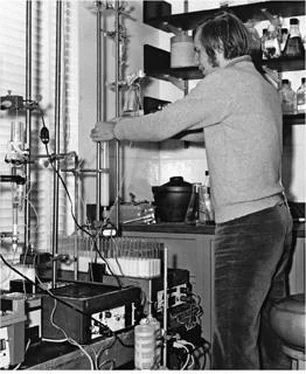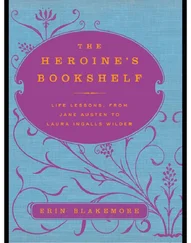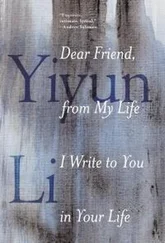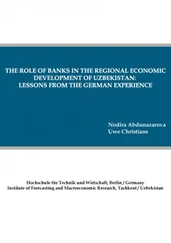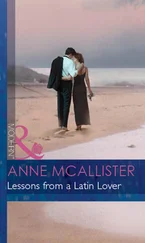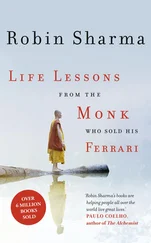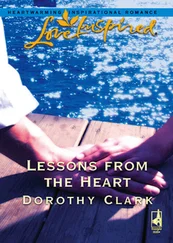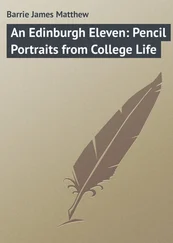James Watson - AVOID BORING PEOPLE - Lessons from a Life in Science
Здесь есть возможность читать онлайн «James Watson - AVOID BORING PEOPLE - Lessons from a Life in Science» весь текст электронной книги совершенно бесплатно (целиком полную версию без сокращений). В некоторых случаях можно слушать аудио, скачать через торрент в формате fb2 и присутствует краткое содержание. Жанр: Биографии и Мемуары. Описание произведения, (предисловие) а так же отзывы посетителей доступны на портале библиотеки ЛибКат.
- Название:AVOID BORING PEOPLE: Lessons from a Life in Science
- Автор:
- Жанр:
- Год:неизвестен
- ISBN:нет данных
- Рейтинг книги:5 / 5. Голосов: 1
-
Избранное:Добавить в избранное
- Отзывы:
-
Ваша оценка:
- 100
- 1
- 2
- 3
- 4
- 5
AVOID BORING PEOPLE: Lessons from a Life in Science: краткое содержание, описание и аннотация
Предлагаем к чтению аннотацию, описание, краткое содержание или предисловие (зависит от того, что написал сам автор книги «AVOID BORING PEOPLE: Lessons from a Life in Science»). Если вы не нашли необходимую информацию о книге — напишите в комментариях, мы постараемся отыскать её.
AVOID BORING PEOPLE: Lessons from a Life in Science — читать онлайн бесплатно полную книгу (весь текст) целиком
Ниже представлен текст книги, разбитый по страницам. Система сохранения места последней прочитанной страницы, позволяет с удобством читать онлайн бесплатно книгу «AVOID BORING PEOPLE: Lessons from a Life in Science», без необходимости каждый раз заново искать на чём Вы остановились. Поставьте закладку, и сможете в любой момент перейти на страницу, на которой закончили чтение.
Интервал:
Закладка:
With its corridor walls seemingly unpainted for at least a decade, the Biolabs’ only sparkle came from the two enormous bronze rhinoceros
that flanked the main entranceway. They had been sculpted by a talented friend of President Lowell's, who also designed the friezes of wild animals that ran above the courtyard. The vision of biology these figures conveyed meshed well with the mission of Harvard's nearby Department of Geographical Exploration, its building still topped by the radio antenna once used to keep in touch with members out beyond the fringes of Western civilization. But that department no longer existed. Rumor had it that President Lowell had been horrified to learn that several of its members were homosexuals. So its handsome one-story brick edifice was now the center of Harvard's Far Eastern studies, where the savvy John King Fairbank and Edwin O. Reischauer held sway.Even closer to the Biolabs along Divinity Avenue was the Semitic Museum, donated by the banker Jacob Schiff at the end of World War I to encourage the study of ancient Jewish culture. But now most of its facilities were occupied by the Bob Bowie- and Henry Kissinger-led Harvard Center for International Affairs (HCIA), whose acronym encoded the identity of its secret government funder, which had an interest in training Harvard's students as the possible future leaders of the free world.
On the far side of the elm-lined grassy courtyard in front of the Biolabs stood what once had been the principal dormitory of the Harvard Divinity School. Ralph Waldo Emerson was said to have lived there early in the nineteenth century. But such historical facts mattered little to James Conant, under whose presidency the Divinity School's long minor role in Protestant theological training had withered almost to extinction. Just before my arrival, religion at Harvard was given a new lease on life through the appointment of Nathan Marsh Pusey as its next president. Born in Iowa in 1907, Pusey had studied classics as a Harvard undergraduate and had obtained his Ph.D. there at the age of thirty. After teaching at Lawrence, Scripps, and Wesleyan colleges, he returned to Wisconsin as president of Lawrence College in 1944. There he was to achieve postwar renown by speaking out against his state's junior senator, Joseph McCarthy. In choosing him as James Conant's successor, the five members of the Harvard Corporation saw themselves reaffirming the importance of a strong moral overtone in higher
education. They were not unduly concerned that Pusey did not have the intellectual distinction to be a member of its faculty. Later they were to silently realize that his writings never sparkled and that his addresses to both students and faculty were occasions of neither enlightenment nor inspiration. And when they inevitably built a library in his memory, it was a below-ground structure intended to store archives.To Pusey's credit, he accepted the Corporation's advice to appoint a first-class dean of the Faculty of Arts and Sciences. Whether he knew that in McGeorge Bundy he was choosing someone who would outclass him on virtually any occasion they were together, we will never know. A Boston blueblood by birth, Bundy came to Harvard via Groton and a brilliant undergraduate career at Yale. At Harvard he was initially one of the elite junior members of the Society of Fellows, later joining the Government Department and securing tenure by the time he became Harvard's most important dean. All appointments to the Faculty of Arts and Sciences would be administered by him, and it was he who would choose the ad hoc committees whose deliberations he and President Pusey invariably attended.
It is highly unlikely that Bundy had any role in Pusey's ill-fated decision, made in his second year as president, to deny the request of a Jewish student to be married in Harvard's imposing Memorial Church, built in the 1920s in memory of the American fallen of the First World War. In so doing, Pusey aroused the wrath of his faculty. A prominent delegation came to his office to tell him that Harvard's church should be open to those of all faiths, not restricted to Christians. It was a grievance rooted in history. Many years before, Jews had been effectively blackballed from faculty positions. Those faculty who had come to the president's office were determined that such bigotry as had stained Harvard's past would not corrupt its present. Sensing a fight that would effectively destroy the moral authority for which he was appointed, Pusey reversed his edict and the incident soon faded from view.
For Harvard's president, however, it was deeply wounding to be told that his initial response, which he regarded a reaffirmation of his institution's long Protestant heritage, was an expression of anti-Semitism.
From that moment on, Pusey never again saw his faculty as allies and became socially isolated from them during his remaining eighteen years as president. For friendship, he and his wife, Anne, would turn to the governing boards. They became summer residents of Seal Harbor on Mt. Desert Island, Maine, close to the home of David Rockefeller, soon to become chairman of Harvard's Board of Overseers. Both leaders felt similarly about the importance of religion, with Rockefeller making a major gift to strengthen the faculty of the Divinity School.My decision to leave Caltech for Harvard was facilitated by a growing friendship with the chemist Paul Doty, whose laboratory in Gibbs Lab was just across Divinity Avenue from the Biolabs. Paul, trained initially as a physical chemist and then a polymer chemist, began physical-chemical studies of DNA only after moving to Harvard in 1948. Eight years older than I, he had just become a full professor when I arrived at Harvard. Fortunately for me, he was one of a handful of key faculty to whom McGeorge Bundy regularly turned for advice. So while many Harvard biologists remained uncertain as to whether I belonged in their department or in chemistry, Bundy, through Paul, knew I was a true biologist and hoped I'd help make the biology department into one comparable in stature to the ones in chemistry and physics.
Reassuring me that my academic life would not be totally at the whim of old-fashioned biologists was the recent formation of the Committee for Higher Degrees in Biochemistry, whose members were to be drawn from suitable individuals in the Biology and Chemistry departments. As a member from Biology, I would help choose the first class of graduate students and advise on appropriate courses for their first year. My first research student, Bob Risebrough, had been admitted as a Biology Department graduate student. As an undergraduate at Cornell, his main focus had been ornithology. Now he was excited by DNA, and his best introduction to it, I decided, might be to do a thesis on the properties of phage 9×174, then reported to be much smaller than any other known phage. Its DNA molecules might be correspondingly smaller, thus perfectly suited to Paul Doty's physical chemistry instrumentation. Later I put my first biochemistry graduate student, Julian Fleischman, to work on the task of establishing the
sizes of the DNA molecules in the much bigger T2 phage. Conceivably each T2 particle contained several DNA molecules held together end to end by protein linkers. Studying them might provide a good model for how DNA is arranged in the chromosomes of higher cells.When Paul Doty ominously told me that promotions to tenure were often decided based on teaching evaluations, I realized I couldn't give the old-fashioned biologists a reason to suggest I might be better suited to a pure research institution or medical school. My attention focused sharply in my first months on my teaching assignments. Invariably worried that I would not have enough material memorized to occupy the next instructional hour, I meticulously outlined all my coming lectures. By doing so, I could offer my virus course students, largely advanced undergraduates, copies of the outlines, thereby relieving them of the need to take notes. Few students, however, availed themselves of this opportunity, continuing to be so sophomor-ically absorbed in note taking that their faces never revealed whether they were following my arguments. Fortunately, not too many stumbled in the hourlong midterm exam. And remembering the long-term benefits that had accrued to me at Indiana University from writing term papers on personally intriguing research topics, I asked them to write ten to fifteen pages on something in the course that particularly caught their fancy.
Читать дальшеИнтервал:
Закладка:
Похожие книги на «AVOID BORING PEOPLE: Lessons from a Life in Science»
Представляем Вашему вниманию похожие книги на «AVOID BORING PEOPLE: Lessons from a Life in Science» списком для выбора. Мы отобрали схожую по названию и смыслу литературу в надежде предоставить читателям больше вариантов отыскать новые, интересные, ещё непрочитанные произведения.
Обсуждение, отзывы о книге «AVOID BORING PEOPLE: Lessons from a Life in Science» и просто собственные мнения читателей. Оставьте ваши комментарии, напишите, что Вы думаете о произведении, его смысле или главных героях. Укажите что конкретно понравилось, а что нет, и почему Вы так считаете.
